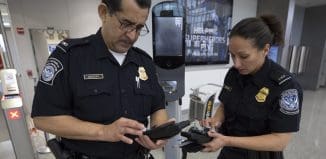Could Online Presence Betray ISIS’ Intentions?
This post is also available in:  עברית (Hebrew)
עברית (Hebrew)
ISIS is well-known for its extensive use of technology and social media in the organisation’s efforts to fill its ranks. But have you ever wondered how the recruiting efforts of the jihadi army work online? So did a team of researchers from the University of Miami who have developed a model to identify behavioural patterns among online groups of ISIS supporters. These models, they hope, could help police and counter-terror agencies paint a clearer picture of their activity, including hints and indicators for when a real-world attack is imminent.
The team identified and analysed 196 pro-ISIS groups during the first eight months of 2015. They tracked second-by-second online activity and came to realise that even though most of the 108,000 members of these groups have likely never met, they were surprisingly adaptive and could extend the longevity of the groups, increase their number, quickly relaunch after being shut down, and inspire “lone wolf” attacks by people with no history of extremism.
“It was like watching crystals forming. We were able to see how people were materialising around certain social groups; they were discussing and sharing information — all in real-time,” said Neil Johnson, a physicist in the College of Arts and Sciences, who applies lessons from physics to the study of people. “The question is: Can there be a signal of how people are coming collectively together to do something without a proper system in place?”
According to the study published in Science, they answer is yes. The researchers employed mathematical models commonly used in chemistry and physics to observe the evolution of pro-ISIS groups. They witnessed how these groups coalesced and proliferated just before real-world attacks.
Johnson and his team believe that by just focusing on these sparse groups of serious supporters, counter-terror agencies and police could monitor their build-up and potentially thwart real-life attacks.
“This removes the guess work. With that roadmap, law enforcement can better navigate what is going on, who is doing what, while state security agencies can better monitor what might be developing,” Johnson said. “So the message is: Find the aggregates — or at least a representative portion of them — and you have your hand on the pulse of the entire organization, in a way that you never could if you were to sift through the millions of Internet users and track specific individuals, or specific hashtags.”






























